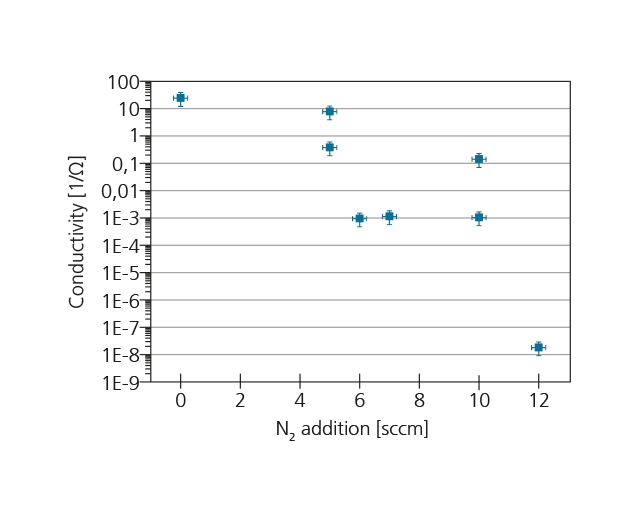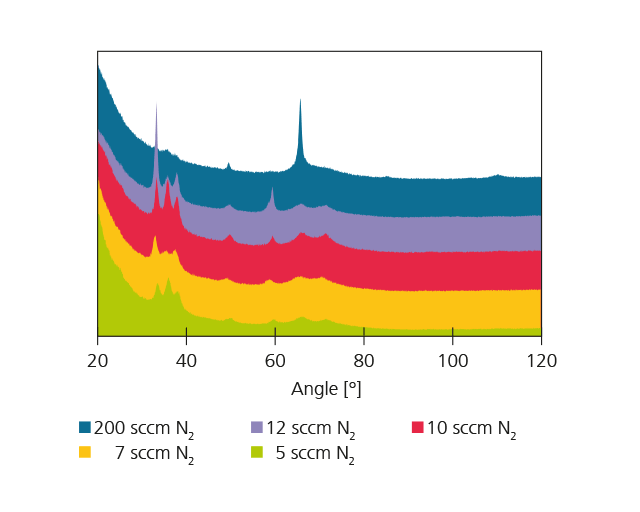
Materials for high-temperature strain gauges

Strain gauges measure material deformations of the component to which they are attached, thereby enabling the display of (critical) forces, torques and other mechanical stresses during operation. Conventional strain gauges, however, reach their limits at higher temperatures of around 200 to 400 °C: Glued systems based on foils can no longer be used in such cases, and even directly applied strain-sensitive films, such as sputtered strain gauges, are difficult to implement. The temperature coefficients of the thin film layers are superimposed to the strain signal and, through oxidation, a continuous increase of the measured values can be observed. New approaches for strain-sensitive, temperature-resistant thin-film materials are therefore currently being researched at the Fraunhofer IST.



Example: Conductive nitrides, produced by means of gas-flow sputtering
Inspired by publications from university research, conductive aluminum nitride (AlN) has become the focus of attention at the Fraunhofer IST. Aluminum nitride has long been known as a piezoelectric material. Stoichiometric AlN is chemically resistant, stable at high temperatures, and electrically insulating. Under special conditions, however, it can also be deposited conductively by means of gas-flow sputtering – a prerequisite for the application of AlN in piezoresistive strain measurement. In reactive gas-flow sputtering – in contrast to magnetron sputtering – there is no so-called hysteresis, i. e. no interaction between the metallic sputtering process and the addition of reactive gas. In this respect, extremely stable reactive sputtering processes can be realized. Depending on the addition of the reactive gas during the sputtering process, e. g. nitrogen, a particularly interesting non-stoichiometric transition range (AlNx) can be set between the insulating phase and the aluminum-rich metallic phase.
The results
AlNx layers with differing nitrogen additions were deposited with a thickness of 2 micrometers onto insulating surfaces. The electrical conductivity of the layers could be varied over eight orders of magnitude (see Figure above). The chemical composition of the layers, the microstructure and the crystallographic properties were also determined. As expected, the samples produced using the lowest nitrogen addition exhibited the highest conductivity and the largest aluminum surplus. However, by means of X-ray diffraction, it could be shown that even for the lowest nitrogen additions, the hexagonal AlN phase is the predominant phase of the layers (see adjacent Figure below). The measured grain sizes decrease with lower nitrogen addition. Furthermore, a metallic aluminum phase could not be detected. An explanation can be offered by a structural model in which surplus aluminum is finely distributed in an AlN matrix, quasi as a dopant.
Outlook and applications
The present results represent solely an interim assessment of the ongoing development. Currently, the effects of a downstream annealing step in the vacuum furnace on the thermal stability and conductivity of the layers are being investigated. In the event of successful development, it will be possible in the future to use sputtered gauges on components subject to high thermal stress, such as compressor blades in gas or aircraft engines.
This article is part of the annual report 2019.